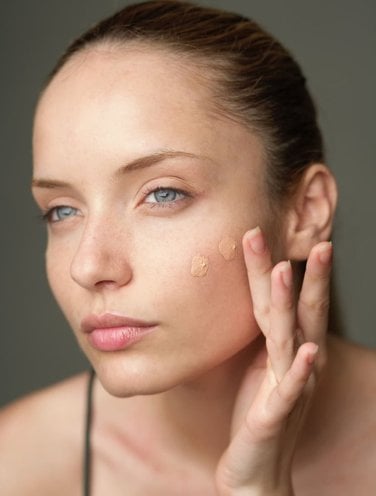The Best Concealer For Acne-Prone Skin & Blemishes

Looking for the best concealer for acne? There is a common misconception that when dealing with spots or acne, the solution lies in layering on loads of high-coverage foundation. However, those who have tried this approach often find that the results are not as flattering as expected.
If you’re aiming to cover spots or acne scars effectively, the key is to turn to the best concealer for acne – one that not only offers substantial coverage but also seamlessly matches your skin tone, effectively camouflaging the imperfections and blending seamlessly into the skin.
To achieve this desired effect, it’s crucial to find an acne-safe concealer for your specific needs and master the art of application. Below, we provide a guide on how to choose the recommended concealer for acne, so you can perfect your application technique.

How to use concealer to cover acne
Start with a natural base
Begin by first applying a light layer of
Try: Skin Illusion SPF 15, with light coverage and fluid texture, which is perfect for hydrating the skin and letting the skin breathe while you wear your foundation. A thin layer of this foundation will prepare your skin for the next steps of covering spots.
Avoid direct contact with the blemish
No matter what type of concealer for acne you choose to use, avoid dotting it directly on the blemish (even if the acne-safe concealer comes with a doe foot applicator). Instead, dispense some product on the back of your hand and then apply it to the spot, with a brush or your finger.
Use the right shade
You need to be extra careful about the shade of acne-safe concealer you choose, especially if your spot is raised and swollen. Never apply a concealer that’s lighter than your skin tone. This will only highlight the spot.
Instead, choose a shade that matches your skin tone perfectly.
Warm the concealer
Warming the
Apply strategically
“You want the most coverage only on the centre of the blemish,” says Charlotte McHale, Clarins Training Manager. “So, place most of the product there. Along the outside, you almost want it to blend away into nothing.”
Play with light and shadow
You could also apply the laws of contouring here. If the raised spot is casting a dark shadow under it, you could dab a hint of acne-safe concealer in a lighter shade there, just to lift the shadow. Use a minimal amount of product to do this, and make sure to blend well.
Don’t forget to powder
Powdering will mattify the spot, and therefore bring less attention to it. So, use a completely matte
When you’re powdering, be careful not to be too rough. Use a gentle patting motion with a
Can you use concealer after you pop a pimple?
“You can try to cover a popped pimple, but know that you’re fighting a losing battle,” McHale warns. “It’s always easier to cover a spot before you pop it. Because once you do, you’re trying to cover something redder, more inflamed, shiny and potentially even runny. You’re asking for trouble.”
If your spot is too large to conceal, and make-up just can’t cover it, why not stick a pimple patch on it? Hydrocolloid pimple patches don’t just disguise a breakout but also absorb fluid from the spot, leaving it flatter within hours.
The best concealer for acne, spots and acne scars
Stop the search for the best concealer for acne – the
Infused with hydrating aloe vera, it features a smooth texture that seamlessly blends into the skin. The formula’s light-reflective properties add an extra touch by brightening up the under eyes. However, it’s recommended to set it with powder when applying it on blemishes for optimal and long-lasting results.
This Everlasting Concealer has a high coverage and matte finish, making it the best concealer for ance scars or blemishes. The spot concealer is enriched in plant extracts with horse chestnut escin to improve circulation and drain dark circles and quinoa to deeply hydrate skin.


